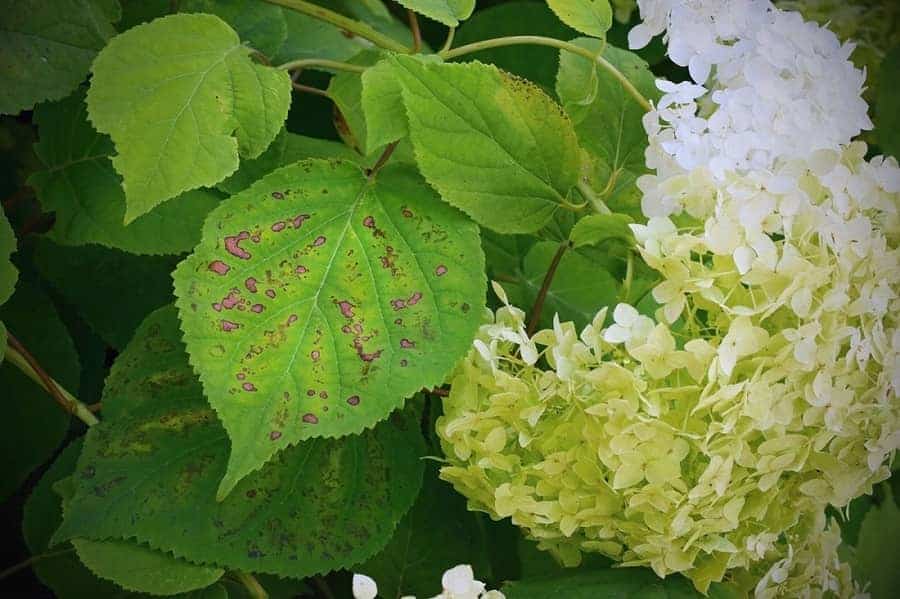
9 Reasons Hydrangea Leaves Turning Yellow (And How To Fix It) Garden
Summing Up Why Hydrangea Leaves Turn Yellow. There are many reasons why hydrangea leaves turn yellow. It could be due to nutrient deficiencies, diseases, watering issues, wrong lighting conditions, sudden temperature changes, or issues with the soil's pH. Thankfully, there are ways to fix these problems.

Hydrangea Leaves Turning Yellow 7Causes and How to Fix Leave
Incorrect soil pH. Low levels of iron in the soil can cause hydrangeas leaves to turn yellow. If the soil pH is too high, it can cause chlorosis. This is where the leaves turn yellow but the veins remain green. Chlorosis is the result of too little iron being available to the plant. This mainly happens when the soil is too alkaline as soils.
(Not sure if this is the right sub) gardening newbie here I planted a
Look for bigleaf hydrangea varieties such as Cityline, Endless Summer, and Lacecap. To lower the pH and make the soil acidic, mix together 1 pound of aluminum sulfate and 5 gallons of water. Then.

Yellow leaves on my hydrangea in the Perennials forum
4. Inadequate Soil pH. Soil pH measures how acidic or basic the soil is. Hydrangeas need soil with a pH that is not too far from neutral to grow well. If the soil pH is not right, their leaves can turn yellow. This happens because the wrong pH can stop plants from getting the nutrients they need from the soil.
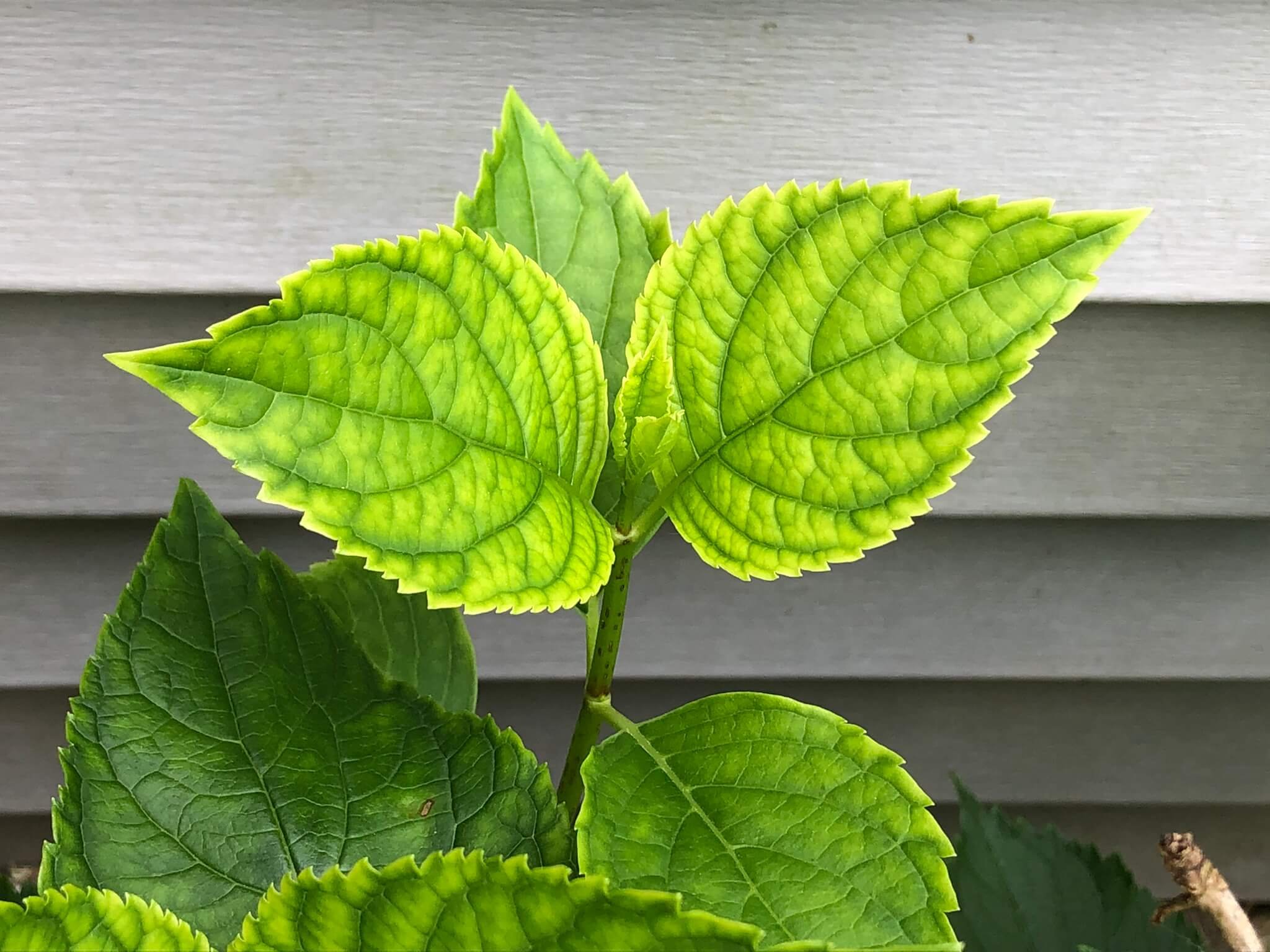
6 Reasons Your Hydrangea Leaves Are Turning Yellow And How To Fix It
Here we will explore the potential causes of yellow hydrangea leaves and provide tips on how to revive your plant so you can enjoy healthy, vibrant hydrangeas all season long. How to Fix Yellow Hydrangea Leaves Lack of Water. One of the most common reasons why hydrangea leaves turn yellow is a lack of water. Hydrangeas require consistent.
Limelight hydrangea yellowing and dropping leaves r/plantclinic
2- Hydrangea Yellow Leaves Green Veins. 3- Only the Edges of the Leaf Become Yellow. 4- Leaves Turn Yellow During Flowering. How to Fix Hydrangea Yellow Leaves. 1-Deficiency of Nutrients And Minerals After Flowering. 2- Lack of light or Excessive Sun Exposure. 3- Water Logging Condition. 4- Soil Dryness.
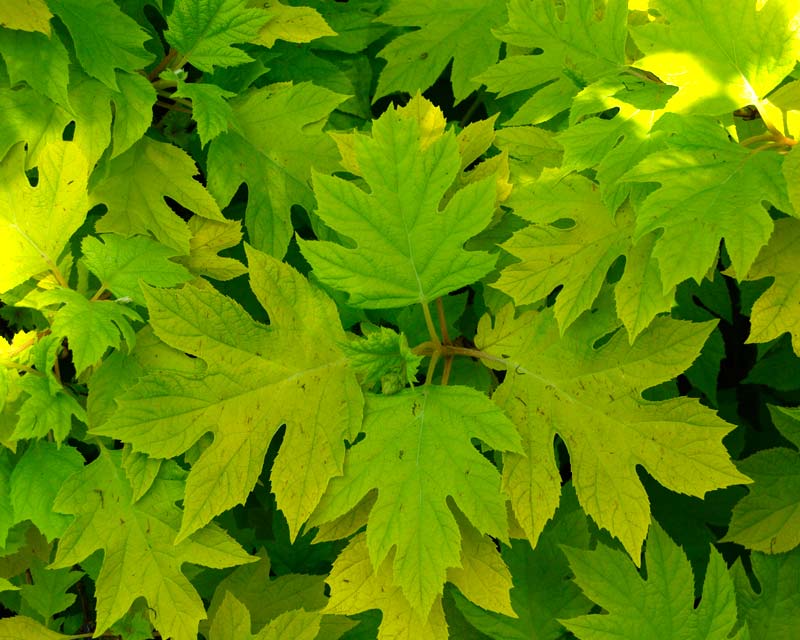
Yellow Leaves On Hydrangea Bush / Do your hydrangeas have brown spots
3. Iron deficiency. Iron deficiency is one of the most common reasons for hydrangea leaves turning yellow. If your soil is lacking in iron, your plants will not be able to produce chlorophyll, which gives leaves their green color. Iron deficiency can be caused by several factors, including: - Soil that is too alkaline.
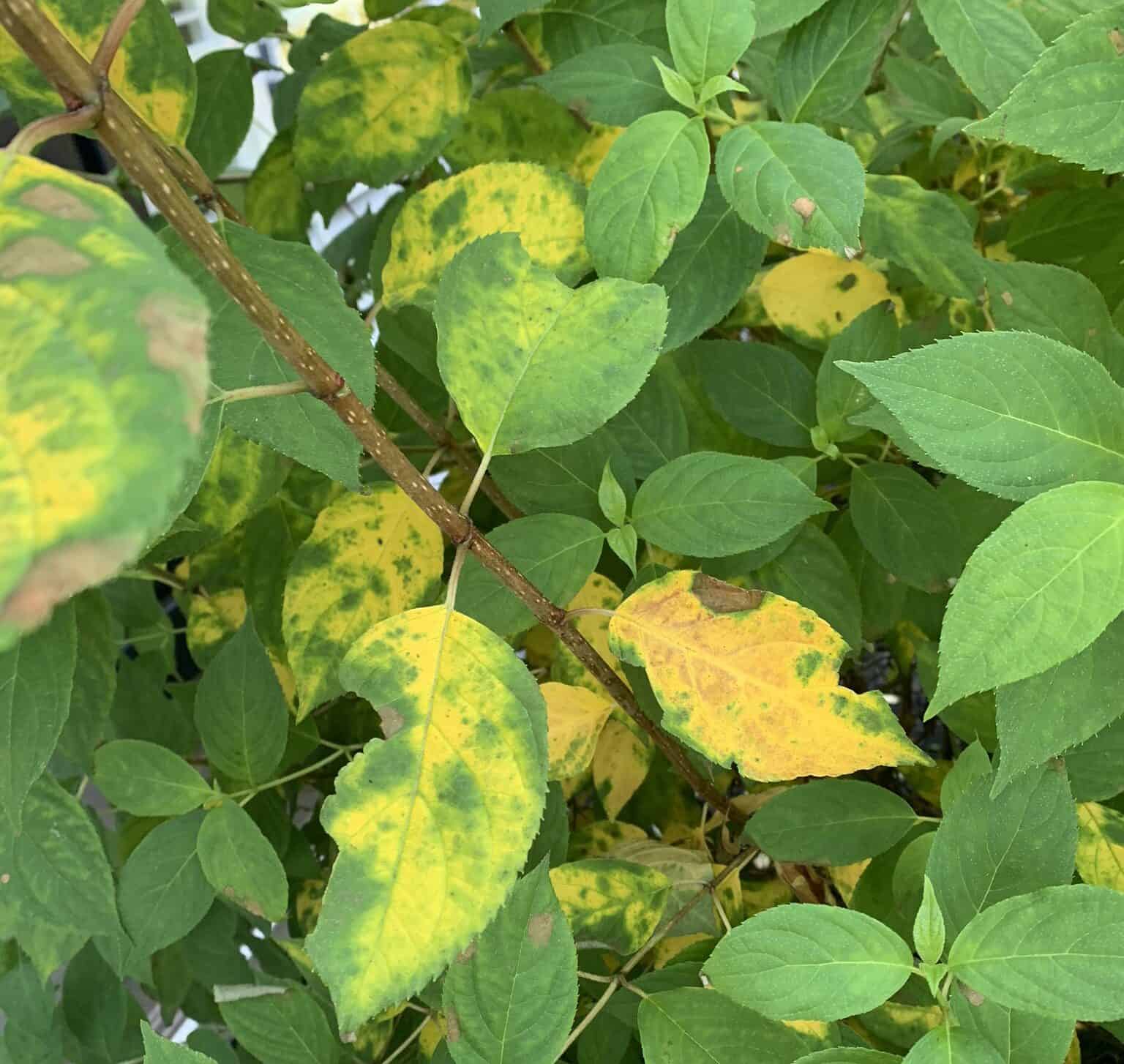
6 Reasons for Hydrangea Leaves Turning Yellow [With Solutions]
If the leaves of your plant are turning yellow because of alkaline soil, you can easily rectify the problem. To make the soil acidic, water it occasionally with a diluted solution of acetic or citric acid. Use mulch to retain moisture in the soil. #10. Natural yellow color. Hydrangeas typically have green leaves.
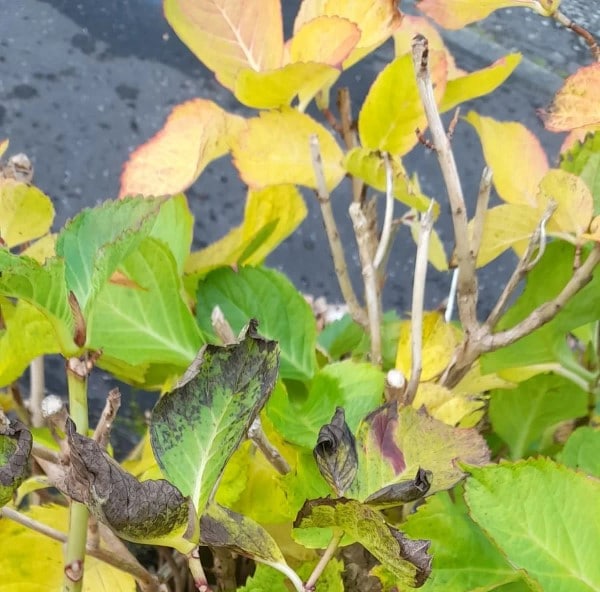
6 Reasons Why Are My Hydrangea Leaves Turning Yellow? + Appropriate
Overwatering is the most likely cause of hydrangea leaves turning yellow and falling off during the spring and summer months. It also hinders the plant's growth and flower production. Overwatering and poor soil drainage cause the soil to become saturated with water. This deprives the roots of oxygen, causing the leaves to turn yellow and drop.

The Edgy Gardener Blog Yellow Leaves on my Pee Gee Hydrangea Tree
4. Too Much Sunlight. Hydrangea leaves can also turn yellow if the plant is getting too much sun. This usually happens during the summer when the weather is hot and sunny. The leaves of the plant will turn yellow and begin to scorch. Other signs of too much sun include brown or crispy leaves, wilting, and leaf drop.

yellow hydrangea. Yellow hydrangea, Hydrangea, Photography
Lack of drainage - Another common cause of yellow hydrangea leaves is lack of drainage; while rarely an issue in most sunny borders, it affects plants grown in pots; you should make sure the pot has sufficient drainage holes. Improper fertilisation - Certain minerals such as manganese, copper, zinc, calcium and phosphorus, can, when used in.

Hydrangea With Yellow Leaves What Are the Causes and How to Fix
The simplest cure is to add ammonium sulfate to the soil. Scatter this around the hydrangea at the base and then apply water. Continue to water as you normally would and this will help to increase the amount of nitrogen in the soil. Hydrangea leaves turning yellow is a common problem. Causes include leaf spot, Iron chlorosis or a Nitrogen.
Hydrangea leaves are turning yellow on the inside. Please help
Here are 10 reasons why hydrangeas suffer from yellow leaves, as well as 10 solutions that are guaranteed to work. The problem: nutritional deficiencies. If your hydrangea's leaves have turned yellow during or shortly after the blooming period, that's a major sign that it's suffering from a nutritional deficiency.

Why Are My Hydrangea Leaves Turning Yellow? (And How to Fix It) World
Too Little Iron Causes Chlorosis. A lack of iron may also cause Chlorosis. Iron chlorosis typically causes new leaves to turn yellow first. If your hydrangeas' leaves begin to turn yellow, but the veins remain green, suspect a lack of iron or iron deficiency. If you have hard water, iron chlorosis is likely.
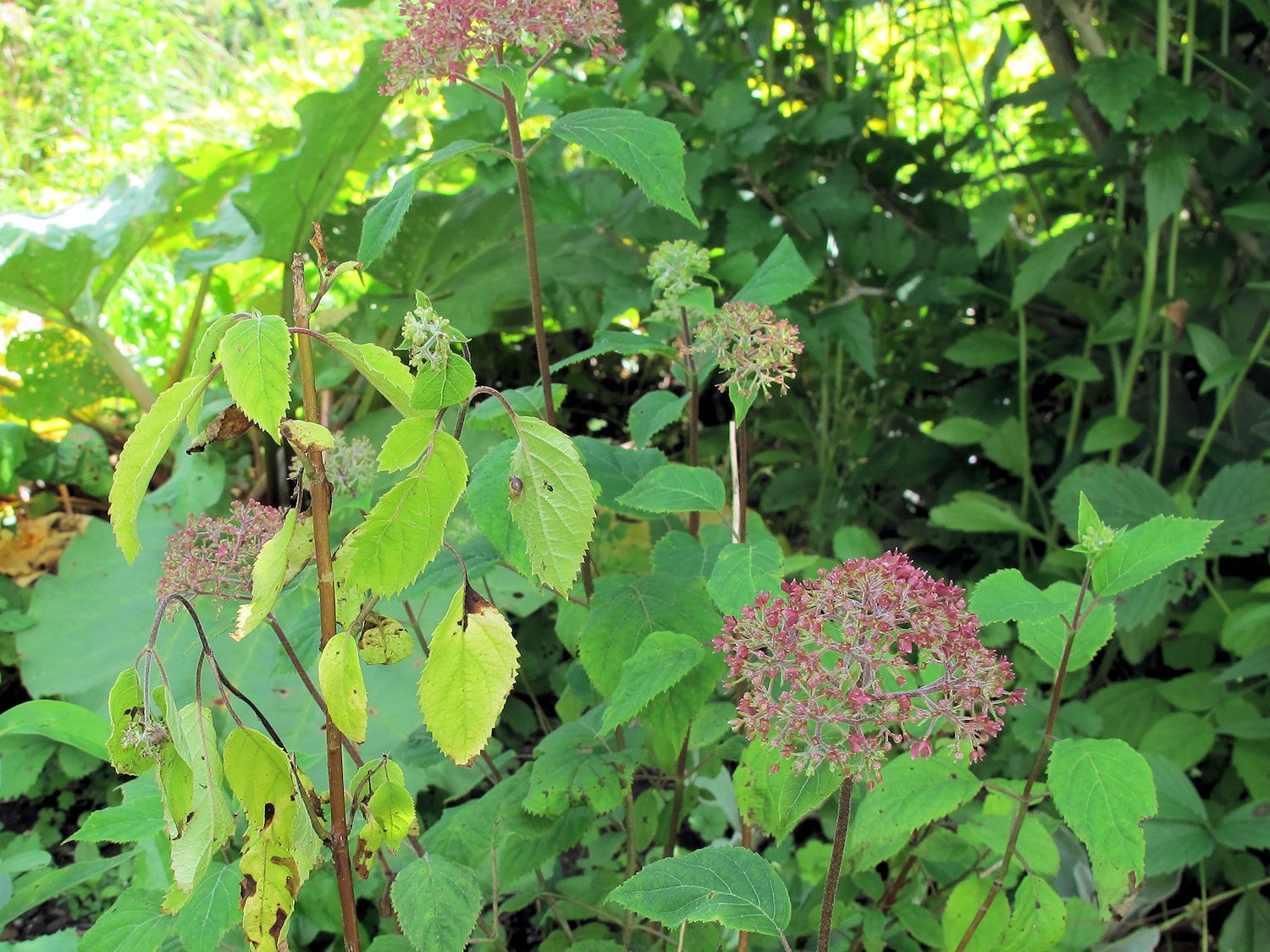
Yellow Leaves Why?
Yellow hydrangea leaves can result from overwatering, underwatering, exposure to direct sunlight, or iron deficiency. To fix overwatering, repot the plant in a new soil mix, place it in indirect sunlight, and water only when the top inch of soil is dry. For nutrient deficiency, feed it with iron chelates. Hydrangea leaves discoloring.

Why Are My Hydrangea Leaves Turning Yellow? (And How to Fix It) World
Soil pH Issues. If the issue is low pH level, it may result in your hydrangea with yellow leaves. The recommended soil acidity for growing Hydrangea plants is 5.5 to 6.5. If the soil is not acidic enough, you can easily correct the soil acidity by watering the plant with a solution of water and citric acid.
